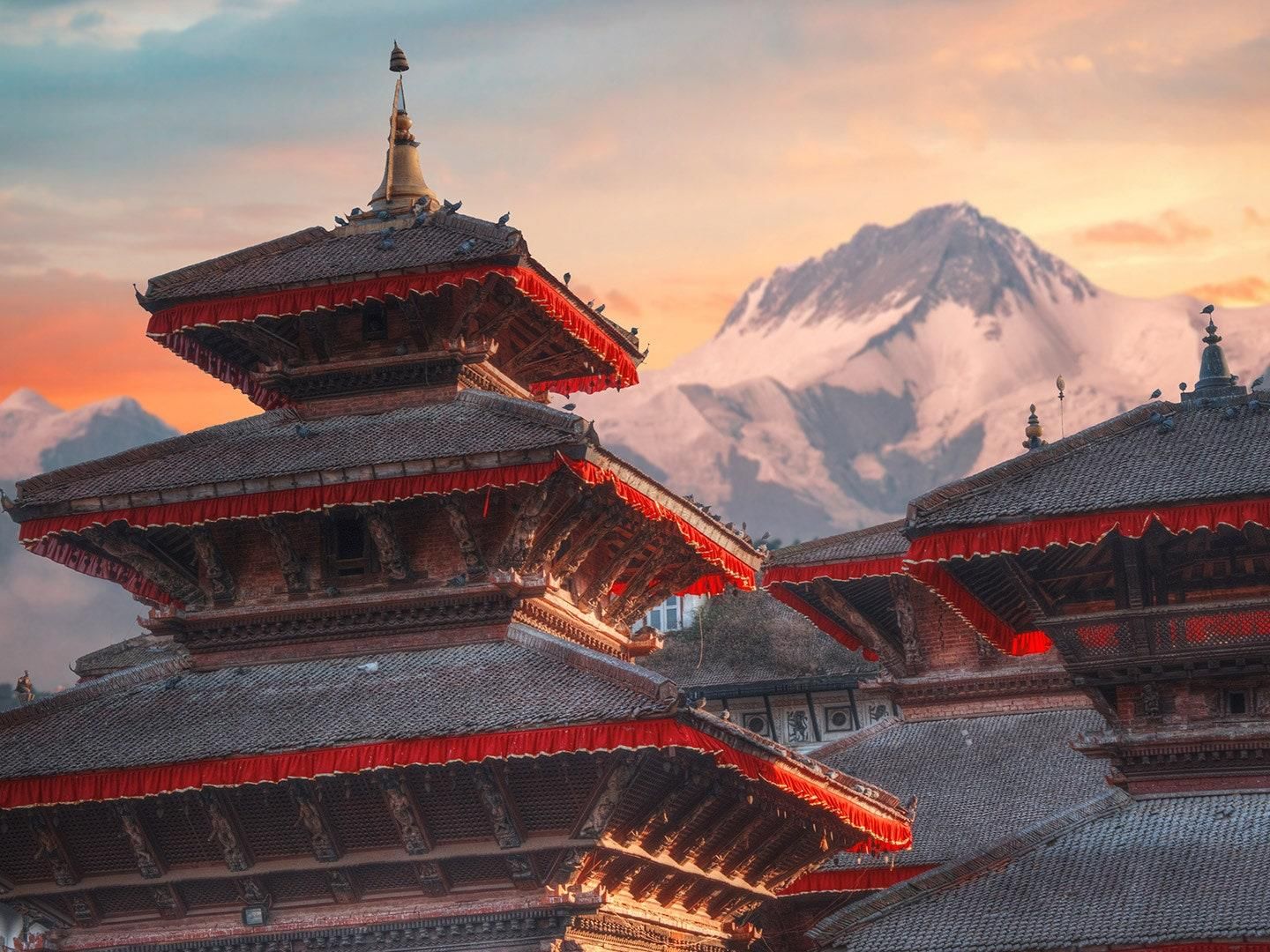Kathmandu Summary Class 9 English Beehive Chapter 8
| Table of contents |

|
| Key Points of the Story |

|
| Detailed Summary |

|
| Theme/Message |

|
| Difficult Words |

|
Key Points of the Story
- Visits sacred Hindu and Buddhist temples with locals.
- Describes the chaotic atmosphere at Pashupatinath temple.
- Observes various activities like cremation on the river banks.
- Contrast between Pashupatinath and Baudhnath stupa.
- Narrator indulges in local experiences and decides to head home.
- Reflects on his exhaustion and purchases a flight ticket.
- Observes a flute seller and his contemplative music.
- Reflects on the universal appeal of flute music.
Detailed Summary
Once upon a time, a traveler found himself in the bustling town of Kathmandu. He managed to secure an inexpensive room right in the heart of the town where he rested for several hours to rejuvenate. The following day, accompanied by Mr. Shah's son and nephew, he embarked on a journey to visit two of the most revered temples in Kathmandu for both Hindus and Buddhists.
 Their first stop was at Pashupatinath, a temple where an atmosphere of frenzied activity enveloped them. Priests, vendors, devotees, tourists, animals, and more mingled together in a chaotic yet vibrant scene. Amid the hustle, they offered a few flowers for worship. The place was so crowded that some struggled to gain the priest's attention, while a commotion ensued near the entrance as individuals vied for access. Notably, a princess from the Nepalese royal family made an appearance, commanding respect from all present.
Their first stop was at Pashupatinath, a temple where an atmosphere of frenzied activity enveloped them. Priests, vendors, devotees, tourists, animals, and more mingled together in a chaotic yet vibrant scene. Amid the hustle, they offered a few flowers for worship. The place was so crowded that some struggled to gain the priest's attention, while a commotion ensued near the entrance as individuals vied for access. Notably, a princess from the Nepalese royal family made an appearance, commanding respect from all present.
Near the main gate, a group of Westerners clad in saffron robes sought entry, only to face skepticism from a policeman who doubted their Hindu affiliation. Meanwhile, a playful scuffle between two monkeys escalated, leading to a chase around the temples and down to the holy Bagmati River, where a solemn cremation ceremony was underway.
At the riverbanks, amidst the activities of washerwomen and children bathing, a poignant moment unfolded as a basket of withered offerings was dropped into the sacred waters. A small shrine partially submerged in the riverbank hinted at a prophecy—the emergence of a goddess symbolizing the end of a dark era.
Transitioning to the Baudhnath Stupa, a serene Buddhist shrine in Kathmandu, a contrasting sense of tranquility prevailed. Encircled by a road, the stupa offered a sanctuary of calmness amidst the bustling streets. Tibetan-owned shops adorned the periphery, showcasing various goods including felt bags, prints, and jewelry, reflecting a harmonious fusion of cultures.
Kathmandu itself emerged as a vibrant tapestry of commerce, spirituality, and culture. The narrow streets bustled with shrines, fruit vendors, hawkers, and a myriad of goods for sale, ranging from traditional artifacts to modern commodities. Amidst the cacophony of radios, car horns, and vendors' calls, the traveler indulged in various treats, savoring the local flavors and sounds.

Contemplating his journey homeward, the traveler decided to opt for a flight due to exhaustion and homesickness. As he gazed at a flute seller in the town square, he observed the seller's serene demeanor as he played his bamboo flutes, each note cutting through the urban clamor with a meditative grace.
The enchanting music of the flute stirred deep emotions within the traveler, evoking a sense of universality and nostalgia. Reflecting on the significance of this experience, he realized the profound impact of simple pleasures and familiar tunes, recognizing the power of music to bridge cultures and touch the core of human existence.
Thus, in the vibrant tapestry of Kathmandu's streets, amidst chaos and tranquility, commerce and spirituality, the traveler found moments of introspection and connection, ultimately reaffirming the enduring power of shared experiences and the universal language of music.
Theme/Message
Theme:
- Cultural Contrasts: Contrasting experiences at Hindu and Buddhist sites.
- Spiritual Reflection: Contemplation on life and cultural richness.
- Traveler's Reflection: Balancing exhaustion with the desire to explore.
Message:
- Cultural Diversity: Appreciating the diverse cultural elements in Kathmandu.
- Inner Peace: Finding solace and reflection amidst chaos.
- Homecoming: Reflecting on the significance of familiar sounds in a new light
Difficult Words
- Febrile: Showing a great deal of nervous excitement or activity.
- Saffron-clad: Dressed in saffron-colored clothing, often associated with Hindu ascetics.
- Shivlinga: An abstract representation of the Hindu deity Shiva.
- Kaliyug: The last of the four stages the world goes through as part of the cycle of Yugas in Hindu cosmology.
- Mercenary: Primarily concerned with making money at the expense of ethics.
- Bansuris: Bamboo flutes used in Indian classical music.
- Quills: Spines or pointed hairs of an animal, often referring to a porcupine's defensive spines.
- Incidental: Happening as a minor accompaniment to something else.
- Meditatively: In a manner characterized by deep thought or meditation.
|
98 videos|532 docs|74 tests
|
FAQs on Kathmandu Summary Class 9 English Beehive Chapter 8
| 1. How do I prepare for the Kathmandu Grade 9 exam? |  |
| 2. What is the exam pattern for the Kathmandu Grade 9 exam? |  |
| 3. When is the Kathmandu Grade 9 exam conducted? |  |
| 4. Is there any specific syllabus to follow for the Kathmandu Grade 9 exam? |  |
| 5. How can I improve my writing skills for the Kathmandu Grade 9 exam? |  |















